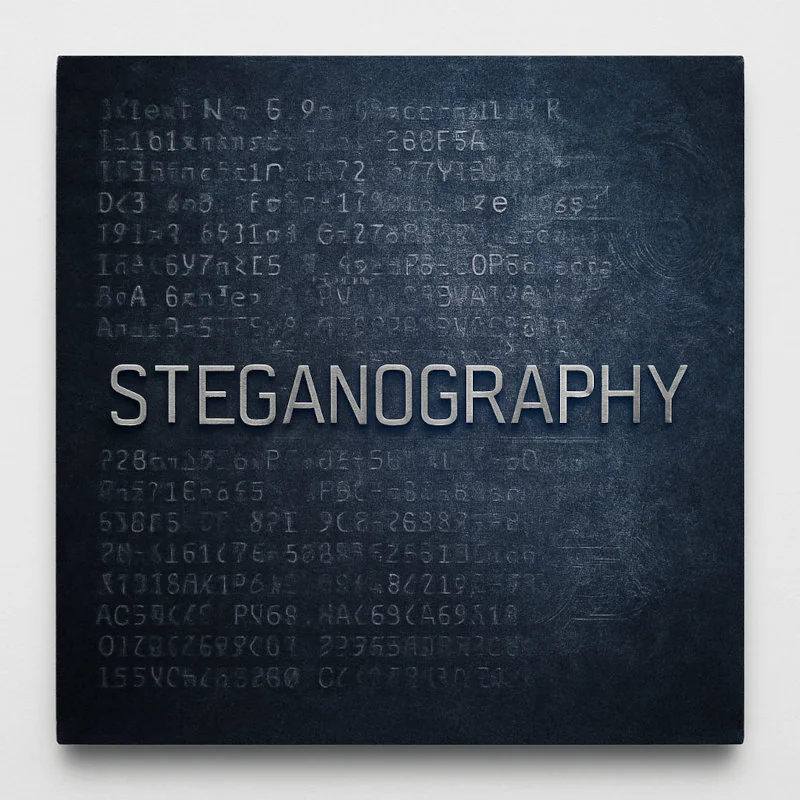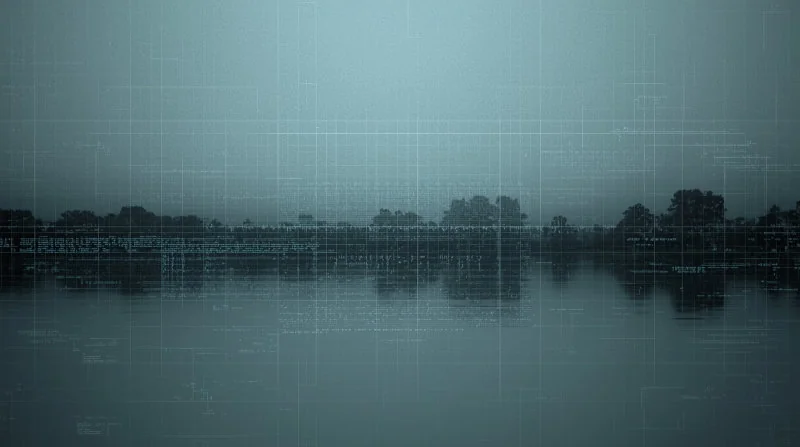The Digital Canvas: Why Images are Perfect for Hiding Data
Published on

Hiding text in a image
Of all the methods for hiding secret messages, none has captured the imagination quite like image steganography. The idea of a simple, everyday photograph containing a hidden blueprint, a secret password, or a covert message is the stuff of spy thrillers. However, it is not fiction. Digital images are, by their very nature, one of the most effective and widely used canvases for the art of steganography.
But why? What makes a picture of a sunset or a family pet such a perfect vessel for concealment?
The answer lies in a combination of three key factors: vast data capacity, the forgiving limitations of human perception, and a multitude of hiding places. In the Venatus challenge, you encounter these principles firsthand in levels like “Image Metadata” and “The Digital Watermark.” Let us break down exactly what makes an image such a powerful tool for hiding data in plain sight.
Table of Contents
- 1. The Sea of Pixels: A High-Capacity Carrier
- 2. The Imperfect Witness: The Human Eye
- 3. A Multitude of Hiding Spots
- The Perfect Cover
- Frequently Asked Questions
- References
1. The Sea of Pixels: A High-Capacity Carrier
First and foremost, images are rich in data. A modern digital photograph is not a single entity; it is a massive grid composed of millions of individual points of light called pixels.
Consider a standard, uncompressed 12-megapixel photo from a smartphone. The dimensions might be 4000 pixels wide by 3000 pixels high.
*Total Pixels: 4000 x 3000 = 12,000,000 pixels.
Each of these 12 million pixels contains color information. In a standard 24-bit color system (also known as “true color”), each pixel’s color is defined by three values: one for Red, one for Green, and one for Blue (RGB). Each of these three values is an 8-bit number, ranging from 0 to 255 (Gonzalez & Woods, 2017).
Let us do the math:
- 12,000,000 pixels
- x 3 color channels (R, G, B) per pixel
- x 8 bits per color channel <<<<<<< HEAD
- = 288,000,000 bits
That is 36 megabytes of raw data. This immense “data surface area” provides an enormous number of potential hiding spots. Even if you use only a tiny fraction of this capacity to hide your secret message, it can still store a significant amount of information without noticeably altering the overall file.
2. The Imperfect Witness: The Human Eye

The second, and perhaps most crucial, factor is the biology of our own eyes. Human vision is incredible, but it is not perfect. We are excellent at perceiving shapes, patterns, and relative changes in color, but surprisingly poor at detecting absolute, minute variations in a single color among millions of others.
This is the principle that Least Significant Bit (LSB) steganography exploits so effectively (Chandramouli et al., 2003).
As we discussed before, each color value (from 0 to 255) can be represented by 8 bits in binary. For example:
- A medium shade of blue might be
1011011**0**in binary (which is 182 in decimal). - If a steganographic program wants to hide a “1”, it simply flips the last bit:
1011011**1**(which is 183 in decimal).
The difference between a blue value of 182 and 183 is so infinitesimally slight that it is physically impossible for the human eye to perceive the change in that single pixel. When you do this across thousands of pixels, you can embed a complete text file, and the resulting image will look identical to the original to any human observer.
Our brains are built to see the “forest” (the overall picture), not the individual “trees” (the exact color value of pixel #4,371,209). Steganography leverages this neurological shortcut, exploiting what researchers refer to as the “just noticeable difference” (JND) threshold in human visual perception (Provos & Honeyman, 2003).
3. A Multitude of Hiding Spots

While LSB encoding is the most famous technique, it is far from the only one. A digital image file is a structured container, and there are many different “compartments” where data can be hidden.
A. Metadata (EXIF Data)
As explored in Venatus Level 2, this is one of the easiest and most common methods. EXIF (Exchangeable Image File Format) data is the block of information at the beginning of most JPEG files that stores details about how the photo was taken (JEITA, 2010).
This includes:
- Camera make and model
- Date and time
- Shutter speed, aperture, ISO
- GPS coordinates (if enabled)
Crucially, it also includes “free text” fields, such as Copyright, Image Description, and User Comment. An attacker or agent can type their secret message directly into one of these fields. Most image viewers do not display this information by default, making it an excellent, simple hiding spot that requires no modification of the pixel data itself.
B. Appended Data (The Trojan Horse)
This technique, as seen in Venatus Level 3, treats the file not as an image, but as a simple sequence of bytes. Most file formats, including JPEG, have a special sequence of bytes that signifies the “End of Image” (EOI marker: 0xFFD9 in JPEG format) (Wallace, 1992).
However, nothing prevents someone from simply appending more data after that end marker. You could attach an entire ZIP archive or another file to the end of a JPEG. An image viewer will ignore it entirely, but an archive program (such as WinRAR or 7-Zip) or a hex editor will detect that extra data. This allows a single file to be both a perfectly valid image and a perfectly valid ZIP file simultaneously—a technique known as polyglot files.
C. Other Advanced Techniques
The world of image steganography goes even deeper, with more complex methods like:
*Masking and Filtering: Hiding data in the “busier” or more complex parts of an image where changes are less likely to be noticed, often using edge detection algorithms to identify suitable regions (Kutter et al., 1999).
*Transform Domain Techniques: Hiding data not in the pixel values themselves, but in the mathematical representation of the image. For instance, data can be embedded in the Discrete Cosine Transform (DCT) coefficients, which are a key component of JPEG compression. These methods are often more robust against image resizing or compression (Cox et al., 2007).
*Spread Spectrum Techniques: Distributing the hidden message across the entire image in a way that makes it extremely difficult to detect without knowledge of the specific embedding algorithm (Marvel et al., 1999).
The Perfect Cover

From its sheer size to the limitations of our biology, the digital image is a near-perfect vessel for secret communication. It offers a high-capacity, innocuous-looking carrier that can conceal data in various ways, from the straightforward to the mathematically complex. The next time you scroll through photos online, remember: you may only be seeing the surface of what is there.
Modern research continues to advance both steganographic techniques and steganalysis (the science of detecting hidden messages), creating an ongoing cat-and-mouse game between those who wish to hide information and those who seek to find it (Fridrich, 2009). As digital images become increasingly prevalent in our daily lives, understanding these principles becomes ever more important for cybersecurity professionals, digital forensics experts, and anyone interested in the hidden layers of our digital world.
Frequently Asked Questions
What makes images ideal for steganography?
Images are ideal due to their vast data capacity (millions of pixels with RGB values), the human eye’s inability to detect minor pixel changes, and multiple hiding spots like metadata, appended data, or pixel manipulations.
How does LSB steganography work in images?
LSB (Least Significant Bit) steganography hides data by altering the least significant bit of a pixel’s RGB values, such as changing a blue value from 182 to 183, which is imperceptible to the human eye.
Can any image format be used for steganography?
Lossless formats like PNG are preferred because they preserve pixel data, while lossy formats like JPEG may corrupt hidden data due to compression, though some techniques (e.g., DCT) work with JPEG.
What is the role of metadata in image steganography?
Metadata, such as EXIF data in JPEGs, can store hidden messages in fields like “User Comment” or “Copyright,” which are not displayed by default, making them a simple and effective hiding spot.
How secure is image steganography?
Basic methods like LSB are vulnerable to steganalysis tools that detect statistical anomalies. Combining steganography with encryption and using advanced techniques like transform domain methods improves security.
References
Chandramouli, R., Kharrazi, M., & Memon, N. (2003). Image steganography and steganalysis: Concepts and practice. Proceedings of the 2nd International Workshop on Digital Watermarking, 35-49. Retrieved from https://link.springer.com/chapter/10.1007/978-3-540-24624-4_3
Cox, I., Miller, M., Bloom, J., Fridrich, J., & Kalker, T. (2007). Digital Watermarking and Steganography (2nd ed.). Morgan Kaufmann Publishers. Retrieved from https://www.sciencedirect.com/book/9780123725851/digital-watermarking-and-steganography
Fridrich, J. (2009). Steganography in Digital Media: Principles, Algorithms, and Applications. Cambridge University Press. Retrieved from https://www.cambridge.org/core/books/steganography-in-digital-media/4AB6E6D3F3BF6C9F1B3D9A0F3B9F6C9D
Gonzalez, R. C., & Woods, R. E. (2017). Digital Image Processing (4th ed.). Pearson. Retrieved from https://www.pearson.com/en-us/subject-catalog/p/digital-image-processing/P200000003334
JEITA. (2010). Exchangeable Image File Format for Digital Still Cameras: Exif Version 2.3. Japan Electronics and Information Technology Industries Association. Retrieved from https://www.cipa.jp/std/documents/e/DC-008-2012_E.pdf
Kutter, M., Jordan, F., & Bossen, F. (1999). Digital signature of color images using amplitude modulation. Proceedings of SPIE Electronic Imaging, 3657, 518-526. Retrieved from https://www.spiedigitallibrary.org/conference-proceedings-of-spie/3657/0000/Digital-signature-of-color-images-using-amplitude-modulation/10.1117/12.344656.short
Marvel, L. M., Boncelet, C. G., & Retter, C. T. (1999). Spread spectrum image steganography. IEEE Transactions on Image Processing, 8(8), 1075-1083. https://doi.org/10.1109/83.777088
Provos, N., & Honeyman, P. (2003). Hide and Seek: An Introduction to Steganography. IEEE Security & Privacy, 1(3), 32-44. https://doi.org/10.1109/MSECP.2003.1203220
Wallace, G. K. (1992). The JPEG still picture compression standard. IEEE Transactions on Consumer Electronics, 38(1), xviii-xxxiv. https://doi.org/10.1109/30.125072